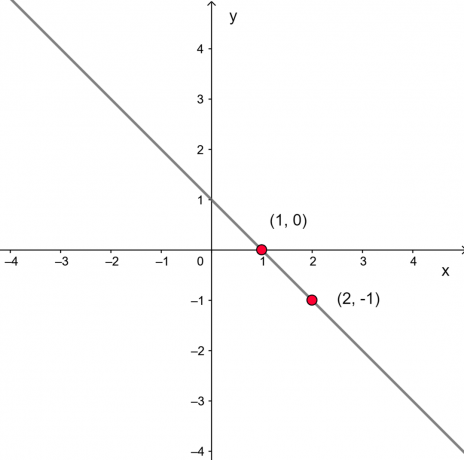THE Counter-Reformwas a religious movement created in the 16th century that aimed to ensure the predominance of the Catholicism at the European continent.
We selected some Counter-Reformation exercises for you to answer. Come on?
Exercises on Counter-Reform
1- The Counter-Reformation was a religious movement that took place in which historical period?
a) Contemporary Age.
b) Modern Age.
c) Middle Ages.
d) Ancient Age.
2- The Counter-Reform is seen as a reaction of the Catholic Church to the expansion of Protestantism. In this sense, what actions were taken by the clergy to prevent such expansion?
a) Catechization, extinction of the Court of Inquisition, release of all books.
b) Catechization, extinction of the Court of Inquisition, prohibition of certain books.
c) Catechization, reactivation of the Court of Inquisition, release of all books.
d) Catechization, reactivation of the Court of the Inquisition, prohibition of certain books.
3- The Counter-Reform was intended to break with the advance:
a) of Buddhism.
b) of Islam.
c) from Protestantism.
d) of Anglicanism.
4- The ______________ was a meeting that aimed to establish the principles that would guide the reform of the Catholic Church.
a) Council of Trent.
b) Council of Nicaea.
c) Council of Constantinople.
d) Council of Chalcedon.
5- Counter-Reform can also be called:
a) Protestant Reformation.
b) Catholic Revolution.
c) Catholic Reformation.
d) Protestant Revolution.
6- (Esan-SP) In Germany in the 16th century, there was a great contradiction between what the Catholic Church preached and what was practiced. In principalities the difficulties were enormous. Peasants felt taxed. Cities craved freedom. The clergy despised the spiritual mission. Many bishops led an existence of pleasure, which offended sincere and simple believers. The abuses pointed out in the statement generated a favorable environment for the acceptance of the new creed supported by:
a) Henry VIII.
b) John Knox.
c) John Huss.
d) John Calvin.
e) Martin Luther.
- Free Online Inclusive Education Course
- Free Online Toy Library and Learning Course
- Free Online Math Games Course in Early Childhood Education
- Free Online Pedagogical Cultural Workshops Course
7- (UFLA-MG 2008) The process of religious reforms began in the 16th century and its causes may be, EXCEPT:
a) The sale of indulgences encouraged by Protestants, who combined their religious ethics with the spirit of capitalism that was born.
b) The change in worldview as a consequence of Renaissance thinking.
c) The presence of poorly prepared priests intellectually that caused dissatisfaction in the faithful.
d) The dissatisfaction of the bourgeoisie in the face of Catholicism's condemnation of profit and interest.
8- (UFMG 2008) Read these excerpts:
I. So we see that faith is enough for a Christian. He doesn't need any work to justify himself.
II. The king is the supreme head of the Church […] In this capacity, the king has all the power to examine, repress, correct […] in order to preserve the peace, unity and tranquility of the kingdom […]
III. By the decree of God, for the manifestation of His glory, some men are predestined to eternal life, and others are predestined to eternal death.
From this reading and considering other knowledge on the subject, it is RIGHT to state that the views expressed in sections I, II and III refer, respectively, to the doctrines:
a) Catholic, Anglican and Orthodox.
b) Lutheran, Anglican and Calvinist.
c) Orthodox, Lutheran and Catholic.
d) Orthodox, Presbyterian and Scholastic.
9- (UFES) In the 16th century, the movement known as the Religious Reform caused a great spiritual revolution in European society and a profound crisis in the hegemony of the Catholic Church. Consider the following information about Religious Reform:
I. It was a revolutionary movement by which peasants demanded the abolition of serfdom and the release of Church lands for market agricultural production.
II. It was based on the doctrines of salvation to ensure and strengthen the hierarchy and unity of Christianity.
III. It established new moral, economic and religious values, which legitimized profit making and created one of the main sources of the capitalist spirit.
IV. It strengthened and spread the doctrine of the Protestant movement through the Council of Trent.
V. He questioned the authority of the popes and the dogmas of the Church, breaking with traditional Catholic standards.
They are CORRECT the information contained in the statements:
a) I and II.
b) I and III.
c) II and IV.
d) III and IV.
e) III and V.
10- What was the function of the Tribunal do Santo Ofício, reactivated during the Counter-Reformation?
a) The function of the Tribunal of the Holy Office was to persecute, torture and kill people who did not profess Protestantism.
b) The function of the Tribunal of the Holy Office was to persecute, torture and kill people who did not profess Christianity.
c) The function of the Tribunal of the Holy Office was to reconcile the relationship between Catholics and Protestants.
d) The function of the Court of the Holy Office was to persecute, torture and kill people who did not profess the Catholic faith.
Click here and download the list of exercises on Counter-Reformation in PDF!
Template
1-B
2-D
3- C
4- A
5- C
6- And
7-A
8-B
9 AND
10-D
Learn more at:
- List of exercises about the High Middle Ages
- List of exercises on the Early Middle Ages
- List of exercises on chronological time and historical time
The password has been sent to your email.

